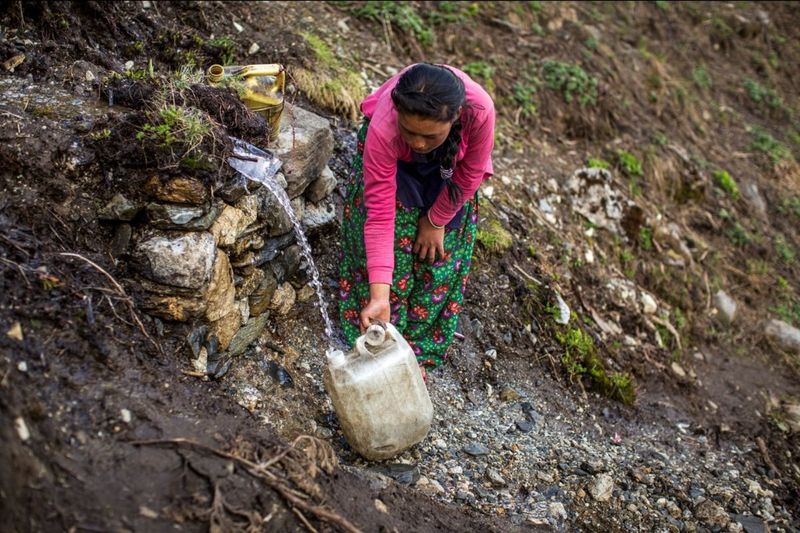|
 When we talk about the abundant freshwater resources of the Hindu Kush Himalaya (HKH), we normally think of snow- and glacier-fed rivers systems and rarely of another perhaps equally important but often neglected water resource: groundwater. This hidden treasure plays a crucial role in sustaining ecosystems, maintaining river baseflow, and preventing land subsidence and sea water intrusion. In the HKH, groundwater plays a significant role in nourishment, agriculture (contributing 60% of irrigation water), sanitation, industry, cultural practices, hydrological balance, and climate change adaptation – and yet we have largely neglected this water resource in our research and water management practices and policies. Fittingly, this year’s World Water Day theme is “Groundwater: Making the invisible visible”, which turns the spotlight on preserving aquifers, promoting groundwater recharge, and ensuring sustainable water use. When we talk about the abundant freshwater resources of the Hindu Kush Himalaya (HKH), we normally think of snow- and glacier-fed rivers systems and rarely of another perhaps equally important but often neglected water resource: groundwater. This hidden treasure plays a crucial role in sustaining ecosystems, maintaining river baseflow, and preventing land subsidence and sea water intrusion. In the HKH, groundwater plays a significant role in nourishment, agriculture (contributing 60% of irrigation water), sanitation, industry, cultural practices, hydrological balance, and climate change adaptation – and yet we have largely neglected this water resource in our research and water management practices and policies. Fittingly, this year’s World Water Day theme is “Groundwater: Making the invisible visible”, which turns the spotlight on preserving aquifers, promoting groundwater recharge, and ensuring sustainable water use.
<h4><strong>Multiple benefits, multiple threats</strong></h4>
<p>The importance of mountain groundwater is not confined to the mountains; it helps maintain baseflow downstream during dry periods by recharging the lowland groundwater system and feeding the basin aquifer. Springs, which are essentially naturally flowing groundwater, allow communities to access the water stored in aquifers for consumption and dry-season agriculture. Mountain springs generate streamflow for non-glaciated catchments and maintain the winter and dry-season flows, in addition to contributing to the baseflow of many rivers in the region. But groundwater is depleting, and this leads to a host of problems.</p>
<p>With climate change, water resources in the HKH region are likely to face acute stress in the future. Further, rapid and unplanned urbanization, changes in land use, growing climate variability, and changes in precipitation are resulting in decreased groundwater recharge. The resulting river flow reduction and drying up of springs and wetlands means water scarcity both upstream and downstream. This poses grave challenges to food security, economic activity, and ecosystem balance.</p>
<p>To make matters worse, we are witnessing the dismantling of natural safeguards: the encroachment into and degradation of natural water bodies (springs, ponds, lakes, canals, and rivers) and the growing disappearance of traditional water systems (stone spouts, wells, and local water tanks). This degradation and reclamation of water bodies affect wetland ecosystems and reduce retention capacities that prevent flooding and land subsidence.</p>
<p>As all these changes happen out of our sight, the issue of groundwater depletion perhaps goes under the radar. But the wellbeing of millions of people in the HKH is at stake.</p>
<h4><strong>Sustainable, community-first approaches</strong></h4>
<p>At ICIMOD, we emphasize approaches to ensure sustainable use and management of water resources, with strong participation of women and poor and marginalized groups in decision making. We believe that the sustainable management of groundwater can help adaptation to changing water availability. Our experience has shown that small-scale interventions to store water during wet periods and discharging it during the dry period can help communities cope with water scarcity. We have developed a <a href="https://icimod.us10.list-manage.com/track/click?u=3a534d9cefa275a13e577ad8f&id=a3b844c84d&e=1e3407ad22" rel="nofollow noopener noreferrer" style="color: rgb(3, 108, 182); text-decoration-line: none;" target="_blank">protocol for reviving springs</a> to help identify recharge areas through hydrogeological investigations and small-scale <a href="https://icimod.us10.list-manage.com/track/click?u=3a534d9cefa275a13e577ad8f&id=a35c75b68c&e=1e3407ad22" rel="nofollow noopener noreferrer" style="color: rgb(3, 108, 182); text-decoration-line: none;" target="_blank">community-based interventions in springsheds</a> to increase groundwater recharge. Such small-scale interventions are a sustainable and cost-effective way to ensure water availability.</p>
</td>
</tr>
</tbody>
</table>
</td>
</tr>
</tbody>
|

